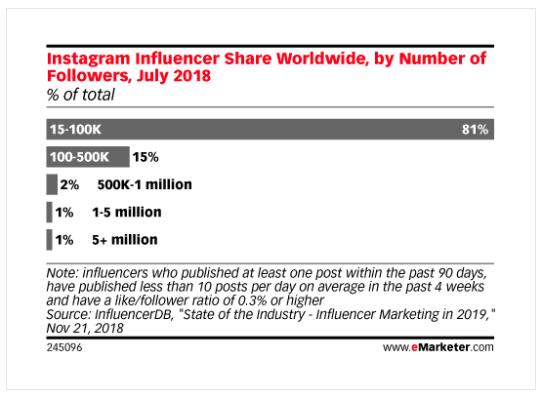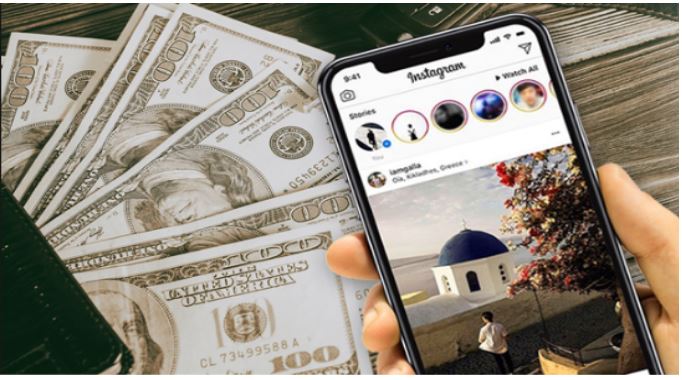Everyone wants to know how to earn money on Instagram. We’re scrolling Instagram all day anyways—usually spending money instead of earning it.
In the last few years, Instagram’s endless feed of gorgeous photos has evolved into something between a glossy magazine, your friend’s taste, and a boutique shop.
With over a billion monthly users, 71% of Instagram users are under 35, Instagram is the platform of aspiration, inspiration—and now, in-app checkout.
There are three main ways to earn a lot of money on Instagram.
- Work as an influencer to post content sponsored by brands
- Be an affiliate marketer selling other people’s products
- Become an entrepreneur and sell your own products
Read this article for the best advice on all three tracks.
How to earn a lot of money on Instagram
Strategy 1: Post sponsored content
Sponsored posts might be the very first thing that blows your mind when your hear the phrase ‘Instagram influencer.’ There are over 500,000 active influencers on Instagram as of early 2019.
The base requirement here is a decent-to-impressive follower count and a competitive engagement rate. In other words, this strategy is for you if you’re good at making strangers on the internet like and trust you.
The appeal of this strategy is that it involves marketing without any of the headaches of e-commerce: it doesn’t require you to create a product or fulfill orders. In a perfect world, all this entails is just being yourself and posting about the products, services, or brands that make your life what it is.
Of course, there’s a downside: not all brands are born equal, and it might not be Bvlgari knocking on your door at first. Plus, there’s a wealth of scammers out there targeting aspiring influencers.
Even if you succeed with the sponsored content route, you’ll probably need to reflect on the balance between your integrity and your revenue. It’s your personal brand on the line, after all. And people trust authenticity.
You’ll need to put every brand who wants to work with you through a rigorous “does this fit my brand?” test. Read more about how one Instagram influencer knows which opportunities are right for her.
Here’s how to get started as an Instagram influencer.
Step 1: Choose a niche
If you really want to make money on Instagram, you’re going to be living and breathing your personal brand. Make sure you truly love it.
And consider how your potential partners see things. Brands will be considering your audience to their target market. According to a recent study, 55% of brands say they prefer micro-influencers, who they perceive to have a more authentic connection with their audience.
That means the more specific you get, the better. ‘Vegan’ is saturated, so why not try ‘sober vegan ultra-marathon runner dad who interviews famous people on his podcast’ instead? (Or don’t, because that one’s taken.)
Meanwhile, if you are a European heiress/model with an Instagram husband, your brand is ready-made.
Step 2: Build trust & grow your audience
81% of Instagram influencers have the number of followers ranges from 15,000 and 100,000. If you’re not there yet, don’t panic. There are no shortcuts to growing your follower count, but there are strategies that were tested by marketers.

Commit to posting consistently. And commit to posting content that is exactly what your audience wants. For instance, @Pedalboard_of_the_day posts a pedalboard every day for his 102,000 followers, just like the name promises.
Step 3: Partner with brands
There are two major routes to linking up with brand partners:
- Find them by pitching them directly. Contact the brands you admire yourself and tell them what you can offer. Your brand pitch needs to provide plenty of compelling details about your audience and approach.
- Help them find you by signing up with an influencer marketing platform. There are a lot of these marketplaces. AspireIQ, Upfluence, and Famebit are good places to start.
On a positive note, brands are eager to seek out effective influencers. If you’re curious about how they view this whole endeavour, check out our guide to working with influencers for some insight into a brand’s perspective.
Step 4: Post transparently
As an influencer in America or the UK, you are legally obligated to make it clear when you are posting an ad. The American Federal Trade Commission’s guidelines require your disclosure to be obvious and easy to understand. Meanwhile, the Advertising Standards Authority in the UK doesn’t care for any coy allusions: say #ad, not #gifted.
To stay on the right side of the law, use the #ad hashtag above the fold (i.e., in the first three lines so people don’t have to click around to find it.)
Even better: use the Paid Partnership tag, which Instagram created back in October 2017.
Strategy 2: Become an affiliate marketer
Unlike sponsored content, this strategy is less about spreading awareness and more about making and improving gross sales. The reason why is because you only make money when your followers actually buy the product. On the plus side, as an affiliate marketer you don’t need to worry about producing that product or fulfilling orders.
The downside is that this strategy requires a solid strategy in case you want to grow without annoying your audience. Also, the term ‘affiliate marketing’ has a bad reputation. It can be associated with scammy promises of seven-figure monthly incomes and… yachts?
Approached ethically, affiliate marketing is actually a smart, and well-established angle on marketing. You recommend your favourite pens, or mascara, or dog food, and provide either a link to buy the product, or else a promo code with a small discount. Both link and promo code are unique to you, so the merchant can track sales back to your efforts. You earn a fee or percentage for every sale.
Meanwhile, as Instagram rolls out product tags and Instagram Checkout, marketers are no longer limited to saying ‘link in bio.’ As customers find it easier to buy on Instagram, affiliate marketers may well see their sales increase.
Step 1: Choose a niche
An affiliate marketer’s niche differs from a sponsored influencer’s niche in that they can be more product-focused. For instance, affiliate marketers sometimes start as product reviewers.
If you’re just starting out, you have the luxury of choosing an audience with specific material desires, e.g., dog owners who want guidance and deals on the best dog food. (And the best collars, the best dog bowls, the best dog goggles, et cetera.)
Step 2: Find merchants to affiliate with
You can affiliate with a brand directly, or you can join what’s called an ‘affiliate network,’ or both. (The answer is always both.)
Affiliate networks are intermediary platforms between brands who run affiliate programs, and marketers like you. They exist because, while a solo entrepreneur selling online courses might be eager to expand their reach to your audience, a Fortune 500 company must scale and automate their efforts. Affiliate networks are designed to give you a huge range of products to choose from. And you aren’t limited to just one network, either.
Amazon Associates is the most obvious place to start. The limitation is that they don’t offer codes; you have to use the affiliate link they provide. While that’s great for Pinterest, blogs, or email newsletters, on Instagram you have to put that link in your bio, or—if you have a business account—your Instagram Story.
Clickbank, Rakuten, and CJ Affiliates are also reputable affiliate networks to consider.
Step 3: Post about the product
As with influencers, affiliate marketing also falls under FTC and ASA rules, so be clear about the nature of your relationship with the product. Fortunately, 54% of people say they appreciate transparency when marketers divulge their relationships, and the #ad hashtag doesn’t offend them.

